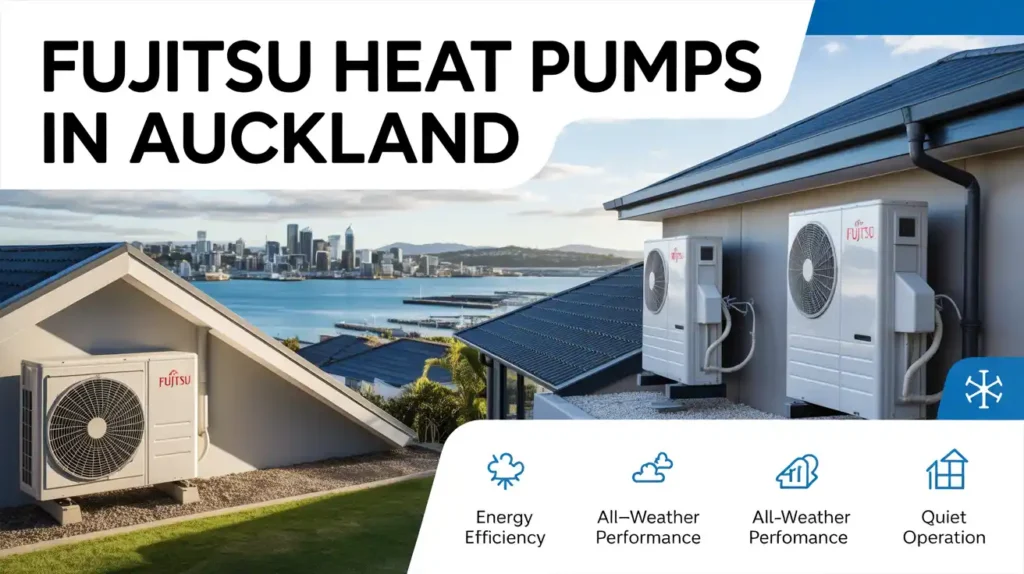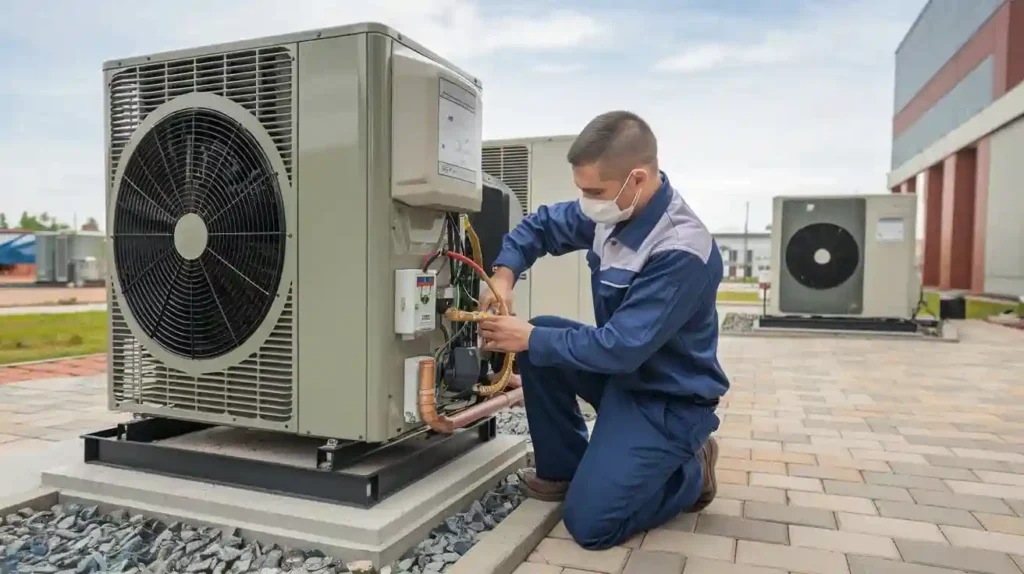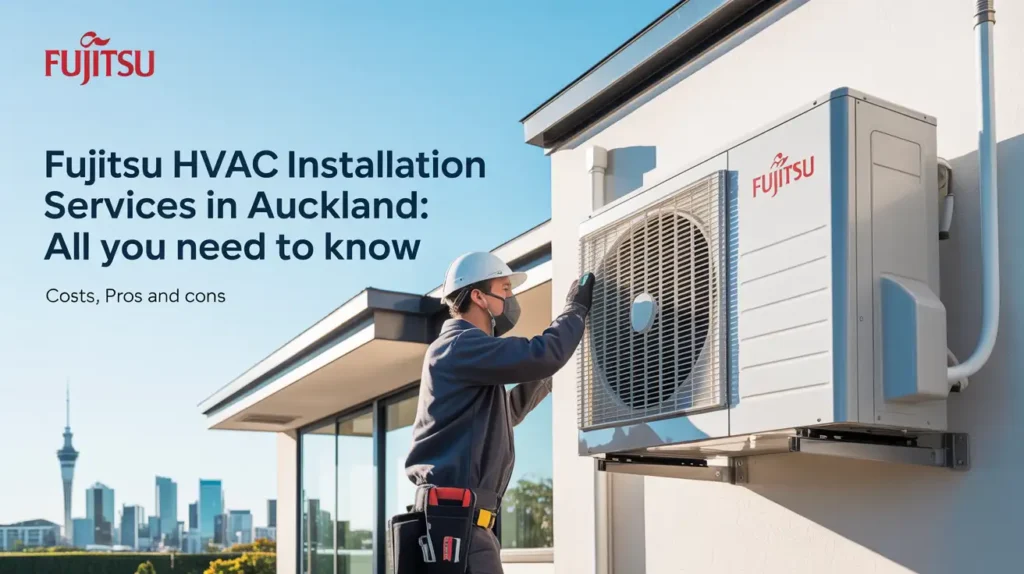
- Transparency
- 24/7 Availability
- Quality Guarantee

What is a home ventilation system and how do they work?
Many homeowners undervalue the importance of a home ventilation system in maintaining a healthy indoor environment. These systems work by exchanging stale indoor air with fresh outdoor air, ensuring that you enjoy better air quality while controlling humidity levels. In this post, you’ll learn how these systems function, the types available, and the benefits of installing one in your Auckland home, including the renowned Lossnay Ventilation System. Understanding how ventilation works will empower you to make informed choices for your living space.
Table of Contents
Understanding Home Ventilation Systems
The air quality and comfort in your home depend significantly on an effective ventilation system in Auckland. These systems work by introducing fresh air while removing stale air, which helps to regulate humidity levels, prevent mold growth, and reduce allergen concentrations. In dynamic climates like Auckland, a well-implemented home ventilation system ensures that your living environment remains healthy and pleasant all year round.
Definition of Home Ventilation Systems
Now, a home ventilation system refers to a setup designed to circulate air throughout your living space. It typically involves a network of ducts and exhaust fans that provide fresh outdoor air while expelling stale indoor air, improving your home’s air quality and overall comfort levels.
Types of Ventilation Systems
There are several types of ventilation systems you can consider for your home, each with its unique benefits:
- Natural Ventilation
- Mechanical Ventilation
- Balanced Ventilation
- Exhaust Ventilation
- Supply Ventilation
This diverse range of options allows you to select a system that best suits your home’s design and your personal needs.
| Type | Description |
|---|---|
| Natural Ventilation | Uses natural airflow through windows and vents. |
| Mechanical Ventilation | Employs fans and duct systems for air circulation. |
| Balanced Ventilation | Simultaneously supplies and exhausts air. |
| Exhaust Ventilation | Removes stale air, allowing outdoor air to enter. |
| Supply Ventilation | Brings in fresh air while exhausting minimal indoor air. |
Another aspect to consider in home ventilation systems is how they impact your living environment. The right system can enhance indoor air quality, ensuring effective humidity control and temperature regulation:
- Improves overall comfort
- Reduces allergens and pollutants
- Prevents mold growth
- Enhances energy efficiency
- Maintains structural integrity
This combination of benefits makes the right choice of ventilation vital for ensuring a healthy home atmosphere.
| Benefit | Explanation |
|---|---|
| Improves comfort | Consistent airflow keeps indoor temperatures balanced. |
| Reduces allergens | Regular air exchange decreases dust and pollen. |
| Prevents mold | Moist air is expelled, keeping humidity levels low. |
| Enhances energy efficiency | Good ventilation lowers heating and cooling costs. |
| Maintains integrity | Protects your home against moisture damage and decay. |
How Home Ventilation Systems Work
Assuming you’re considering a home ventilation system, it’s important to understand its functionality. These systems regulate indoor air quality by effectively exchanging stale indoor air with fresh outdoor air while minimizing heat loss. By doing so, they create a comfortable living environment that alleviates issues such as dampness and indoor pollutants, which are particularly relevant in Auckland’s humid climate.
Mechanisms of Action
There’s an array of mechanisms that enable home ventilation systems to function efficiently. Typically, these systems draw in fresh air from the outside, filter it to remove impurities, and distribute it throughout your home. Simultaneously, they extract stale indoor air, ensuring a continuous flow that maintains optimal air quality.
Airflow Management
If you want maximum efficiency in your home ventilation system, effective airflow management is key. Properly designed systems will balance the intake and exhaust of air, facilitating a consistent flow that regulates humidity and temperature while promoting energy efficiency.
Understanding how to manage airflow within your home is vital for comfort and health. This involves positioning vents strategically and ensuring that air can move freely throughout your rooms. By maintaining an adequate balance of fresh air intake and stale air exhaust, you can create an environment that is not only comfortable but also energy-efficient, which is especially beneficial in Auckland’s changing weather conditions.
Go green with Infinity Aircon! We install, maintain, and repair energy-efficient Air ventilation system for home Installation Auckland
Benefits of Home Ventilation Systems
Some of the most significant benefits of installing a home ventilation system include improved indoor air quality, enhanced energy efficiency, and reduced moisture levels. Ensuring proper ventilation helps maintain a comfortable living environment, while also protecting your home from potential damage caused by dampness and poor air circulation. In Auckland, where humidity can be a concern, these systems can greatly enhance your overall well-being
Improved Indoor Air Quality
Quality indoor air is necessary for your health and comfort. A home ventilation system continually replaces stale air with fresh outdoor air, reducing pollutants, allergens, and odors. This improved air quality can lead to better respiratory health and an overall more pleasant living environment, especially vital in areas with high humidity like Auckland.
Energy Efficiency
Ventilation systems not only improve air quality but also enhance energy efficiency. By continuously cycling in fresh air without wasting energy, these systems help regulate your home’s temperature and reduce the load on your heating and cooling systems.
Home ventilation systems are designed to work efficiently, utilizing heat recovery technology that transfers warmth from the outgoing stale air to the incoming fresh air. This means less reliance on your heating system during the cooler months, leading to lower energy bills and a smaller carbon footprint. In Auckland’s climate, this can significantly improve your home’s energy efficiency, ensuring your comfort while also being environmentally conscious.
How to Choose the Right Ventilation System in Auckland
Your choice of a home ventilation system is vital for creating a comfortable and healthy living environment. In Auckland, various systems cater to different needs, each with unique advantages. Consider the size of your home, humidity levels, energy efficiency, and budget when selecting the right system to ensure optimal airflow and air quality.
Factors to Consider
System selection is influenced by multiple factors, including:
- Home size and layout
- Local climate conditions
- Energy efficiency ratings
- Noise levels
Recognizing these factors will help you find a ventilation system that fits your specific requirements.
Tips for Selection
You should prioritize energy efficiency and maintenance when choosing your ventilation system. It’s beneficial to assess available options based on your home’s needs and consult with local experts. Consider the ease of installation and whether it fits your long-term plans for the space.
- Evaluate warranty offers
- Seek advice from professionals
- Compare different brands
- Read customer reviews
Any informed decision will lead to better performance and reliability in your ventilation system.
Tips
Tips for selecting the right system can further enhance your experience. Begin by researching the specific ventilation types available, and understand their pros and cons. Consulting local installation specialists can provide insights into the best options for Auckland’s climate. Don’t overlook the importance of features such as air filtration and control settings.
- Identify your primary ventilation needs
- Assess the ease of user interface
- Check for energy-saving features
- Consider installation complexities
Any thoughtful approach will ensure you made the right choice for your home.
Home ventilation system Installation Process Auckland
After you decide to install a home ventilation system, the process typically begins with an assessment of your home’s airflow and moisture levels. Understanding your specific needs allows professionals to determine the best system for you, like the Lossnay Ventilation System, which is popular in Auckland for its energy recovery capabilities. This ensures that your installation is tailored to enhance indoor air quality effectively.
Preparatory Steps
An initial evaluation of your home is important before installation. This includes measuring square footage, assessing existing ventilation, and identifying areas of humidity and airflow issues. Consulting with a qualified professional will help you develop a plan tailored to your unique environment, ensuring optimal efficiency once installed.
Installation Best Practices
One key practice is to ensure that all components are installed correctly and according to manufacturer specifications. This includes proper sealing of ducts and ensuring adequate connectivity to your existing HVAC systems. It’s also important to create a balanced airflow system that prevents excessive pressure changes in your home.
Process adherence during installation plays a significant role in the performance of your home ventilation system. Following manufacturer guidelines will optimize system efficiency and longevity. Make it a point to regularly check for any potential blockages in ducts and keep filters clean, ensuring that your system operates at its best, maximizing its benefits for fresh, healthy air in your home.
Maintenance Tips for Home Ventilation Systems
Not maintaining your home ventilation system can lead to inefficiencies and performance issues. To ensure optimal function, consider these tips:
- Regularly clean filters to improve airflow.
- Inspect ducts for leaks or blockages.
- Check for unusual noises from the system.
- Schedule professional inspections at least once a year.
Thou shall take these steps to keep your system running smoothly.
Routine Checks
Routine checks are imperative to maintaining your home ventilation system. Make it a habit to inspect the filters monthly and replace them if they appear dirty or clogged. Ensure that the vents and ducts are clear of dust and debris, allowing for effective airflow throughout your space. By staying proactive, you can extend the life of your system and enhance indoor air quality.
Common Issues to Address
Any signs of inefficiency in your home ventilation system may indicate underlying issues that need your attention. Watch for decreased airflow, excessive noise, or unusual odors, as these can signal problems with the fans or filters. Timely intervention can prevent further damage and ensure your system operates effectively.
For instance, if you notice a significant drop in airflow, it may be due to a dirty filter or blocked ductwork, leading to overworked fans. In such cases, addressing the issue quickly can help avoid costly repairs down the line. Additionally, pay attention to any strange smells, which could indicate mold growth or a malfunctioning component. Regular upkeep and vigilance will keep your system efficient and your indoor air quality high.
Summing up
From above, a home ventilation system is designed to improve the indoor air quality of your living space by ensuring a continuous exchange of stale air with fresh outdoor air. By installing a system like the Lossnay Ventilation System, you can effectively manage moisture and pollutants, promoting a healthier environment for you and your family. Understanding how these systems operate and their benefits is imperative in making informed choices for your home in Auckland, ensuring a comfortable and energy-efficient living space.
For reliable upgrades, choose Infinity Aircon. As a locally owned business with more than 10 years of experience, we specialize in providing energy-efficient, dependable Heat Pump solutions across Auckland.
Contact us at +64 2102220596 for a free quote on converting your Heat pump System. We’re dedicated to keeping your home and office comfortable year-round!
FAQ
How does air ventilation work in a house?
Air ventilation in a house functions by exchanging stale indoor air with fresh outdoor air. It involves two primary mechanisms:
1. Natural Ventilation: Occurs through openings like windows, doors, and vents, allowing air to flow passively due to pressure differences and wind.
2. Mechanical Ventilation: Utilizes fans or blowers to actively circulate air throughout the house. This includes exhaust fans in bathrooms and kitchens to remove excess moisture and odors, as well as whole-house ventilation systems that distribute fresh air evenly.
How much does a home ventilation system cost Auckland, NZ?
The cost of a home ventilation system in Auckland, New Zealand, can vary depending on the type of system installed, the size of the house, and the complexity of the installation. As a non-local AI chatbot, I do not have real-time access to specific pricing information for home ventilation systems in Auckland, NZ.
It is recommended to contact local HVAC contractors or ventilation specialists for accurate cost estimates based on your specific requirements. They can provide detailed information on the types of systems available, their respective costs, and any additional factors that may influence the overall price.
Are home ventilation systems worth it?
Whether a home ventilation system is worth it depends on several factors, including your specific needs and circumstances. Here are some potential benefits to consider:
1. Improved indoor air quality: Ventilation systems help remove pollutants, allergens, and excess moisture from the air, creating a healthier and more comfortable living environment.
2. Reduced risk of respiratory issues: Improved air quality can reduce the risk of developing respiratory problems, such as asthma and allergies, especially for those sensitive to indoor air pollutants.
3. Moisture control: Ventilation helps regulate humidity levels, preventing condensation and mold growth, which can damage your home and belongings.
4. Energy efficiency: Some ventilation systems, such as heat recovery ventilators (HRVs), can help reduce energy consumption by preheating or pre-cooling incoming air, reducing the load on your heating and cooling systems.
5. Increased comfort: A well-ventilated home feels more comfortable and inviting, as stale air and odors are removed, and fresh air is circulated.
However, it’s important to weigh these benefits against the costs of installation and maintenance, as well as any potential drawbacks, such as noise or drafts. It’s recommended to consult with an HVAC professional to determine if a home ventilation system is a suitable investment for your specific situation.
How much does it cost to install a ventilation system in a house?
The cost of installing a ventilation system in a house can vary depending on factors like system type, house size, installation complexity, and local labor rates. Simple exhaust fans for bathrooms and kitchens typically cost around $100-$300.
Whole-house fans for ventilating the entire house can cost around $300-$1,000. Heat recovery ventilators (HRVs) that exchange heat between incoming and outgoing air cost around $800-$2,000. Energy recovery ventilators (ERVs) that exchange both heat and moisture cost around $1,200-$3,000. It’s recommended to get quotes from local HVAC contractors for an accurate estimate based on your specific requirements.
Do ventilation systems use a lot of electricity?
The electricity consumption of ventilation systems varies depending on the type of system and the frequency of use. Simple exhaust fans typically use around 10-50 watts of electricity when operating. Whole-house fans can consume more power, around 100-500 watts, as they circulate larger volumes of air.
Heat recovery ventilators (HRVs) in Aucland and energy recovery ventilators (ERVs) are generally more energy-efficient, consuming around 50-200 watts while exchanging heat and moisture between incoming and outgoing air. It’s important to note that the actual electricity consumption will depend on factors such as the size of the system, the duration of operation, and local electricity rates.
HVAC Maintenance Tips You Need
Maintain your HVAC system for optimal performance with these key tips: replace filters regularly, schedule yearly inspections, clean the coils, check the thermostat, and ensure proper airflow. These simple actions can boost efficiency and save you money throughout the year!


Auckland’s Best HVAC Service Companies: The Top Providers, Their Services and How They Compare

